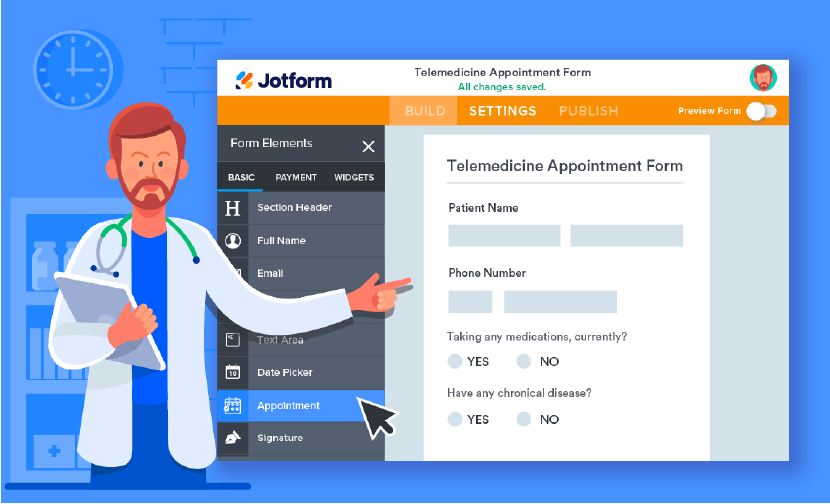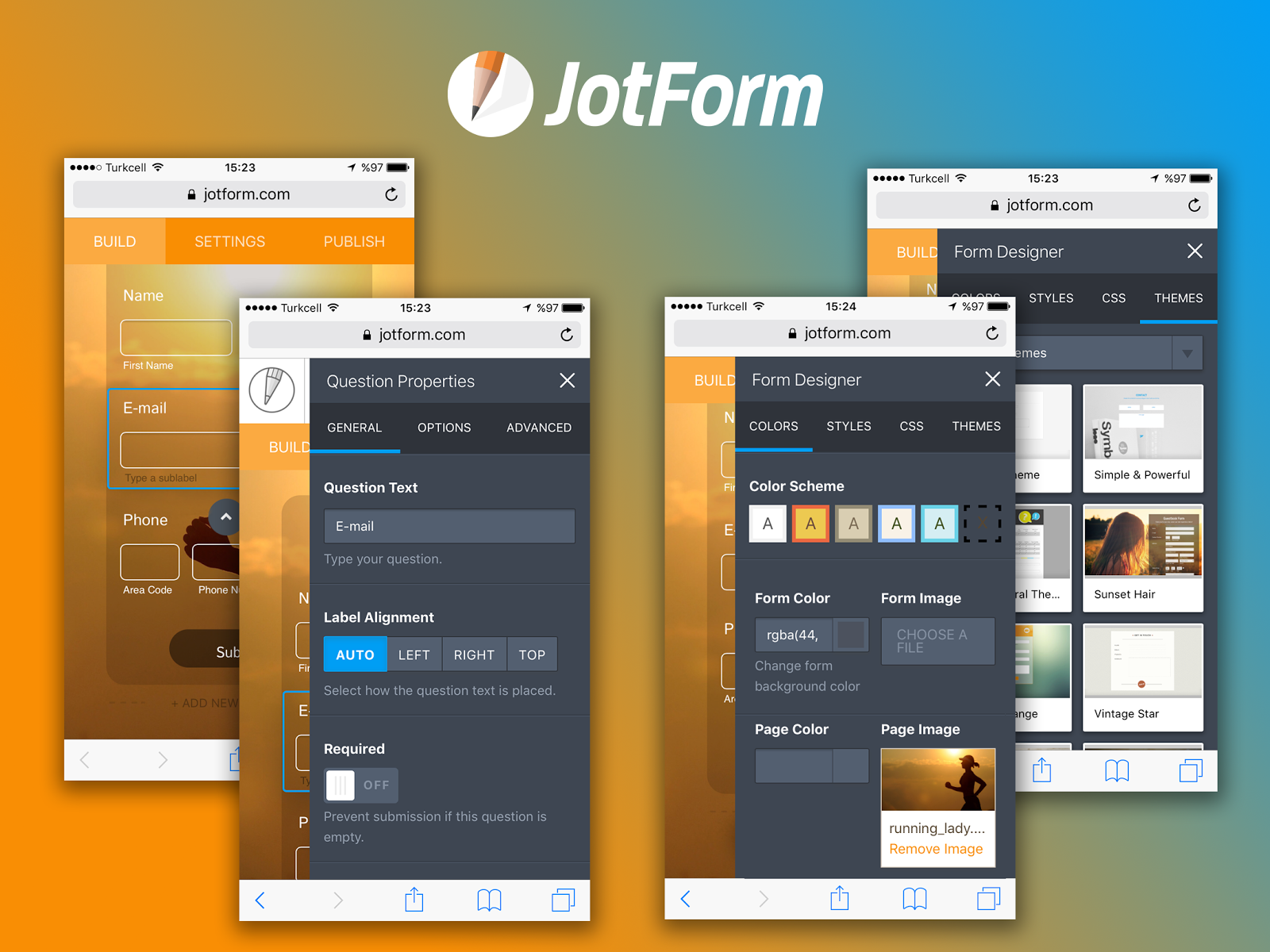In the modern digital era, data collection has become the backbone of successful businesses, organizations, and entrepreneurs. Whether you’re gathering customer feedback, accepting online orders, or registering event participants, online forms play a critical role. Among the numerous tools available, Jotform stands out as one of the most versatile, user-friendly, and powerful form builders on the market.
In this blog post, we’ll explore what Jotform is, its key features, benefits, use cases, pricing, and why it has become a go-to solution for professionals across industries.

What is Jotform?
Jotform is an online form builder that allows users to create professional forms without any coding knowledge. Launched in 2006 by Aytekin Tank, Jotform has grown into a leading platform with over 20 million users worldwide. It provides a drag-and-drop interface, enabling anyone—from small business owners to enterprise teams—to design customized forms for surveys, applications, registrations, payments, and more.
The tool’s simplicity, flexibility, and automation features make it ideal for both beginners and advanced users who want to streamline workflows and collect data efficiently.
Why Jotform is So Popular
What makes Jotform stand out from competitors like Google Forms, Typeform, or Wufoo is its balance of ease of use and advanced capabilities. Here are a few reasons behind its popularity:
No Coding Required:
You don’t need technical skills to build complex forms. The drag-and-drop builder makes it easy to design beautiful, functional forms in minutes.Huge Template Library:
Jotform offers 10,000+ ready-to-use templates for everything from job applications and registration forms to feedback surveys and order forms.Integrations and Automation:
It integrates seamlessly with popular apps like Google Sheets, Slack, Trello, PayPal, Zoom, and HubSpot, allowing automated workflows that save time and reduce manual effort.Responsive Design:
All Jotform forms are mobile-friendly, ensuring a smooth experience for users on smartphones, tablets, or desktops.Advanced Security:
Jotform uses SSL encryption, GDPR compliance, and HIPAA compliance (for healthcare organizations) to protect sensitive information.
Key Features of Jotform
Let’s take a closer look at some of Jotform’s standout features that make it an industry leader.
1. Drag-and-Drop Form Builder
The intuitive builder lets users create customized forms by simply dragging and dropping elements—like text fields, dropdowns, checkboxes, or file upload options. You can adjust form styles, colors, and fonts to match your brand’s identity.
2. Conditional Logic
This feature allows you to make smart, dynamic forms that change based on user input. For example, if someone selects a specific answer, the form can automatically show or hide certain fields.
3. Payment Integrations
Jotform supports over 30 payment gateways, including PayPal, Stripe, Square, and Authorize.net. This makes it easy to collect payments, donations, or subscription fees directly from your form.
4. Jotform Tables
Jotform Tables work like an advanced spreadsheet that automatically stores and organizes all your form submissions. It’s perfect for managing projects, analyzing data, or tracking leads.
5. PDF Editor
The built-in PDF Editor lets you automatically convert form responses into professional-looking PDF documents—ideal for invoices, contracts, or reports.
6. Approvals and Workflow Automation
You can create automated approval flows where team members review and approve submissions. This is especially useful for HR forms, leave requests, or client proposals.
7. Form Analytics
Jotform provides detailed analytics to track form performance—showing submission rates, completion times, and conversion data to help you improve engagement.
8. Mobile App
With the Jotform Mobile Forms app, you can create, view, and manage forms offline. It’s a great option for field surveys, inspections, and on-site data collection.

Top Use Cases of Jotform
Jotform is incredibly versatile. Here are a few ways different professionals and businesses use it:
1. Businesses and Startups
Companies use Jotform for:
Lead generation forms
Order and payment forms
Customer feedback surveys
HR recruitment and employee onboarding
2. Educational Institutions
Schools and universities rely on Jotform for:
Student registration
Course feedback forms
Scholarship applications
Event management
3. Nonprofits and NGOs
Nonprofit organizations benefit from Jotform’s donation forms, volunteer sign-ups, and membership forms—often with special discounts for nonprofits.
4. Healthcare Professionals
With HIPAA-compliant forms, doctors and clinics use Jotform for patient intake, appointment scheduling, and medical consent forms.
5. Event Planners
Event organizers use Jotform for RSVPs, ticket sales, and vendor registration, automating many event-related tasks.
Jotform Integrations
One of Jotform’s biggest strengths is its ability to connect with other apps and tools. Some popular integrations include:
Google Workspace (Sheets, Drive, Calendar)
Slack and Microsoft Teams
CRM Tools: HubSpot, Salesforce, Pipedrive
Payment Processors: PayPal, Stripe, Square
Marketing Platforms: Mailchimp, ActiveCampaign, Constant Contact
These integrations make Jotform a central hub for managing workflows, ensuring data flows smoothly between tools.

Jotform Pricing Plans
Jotform offers several pricing tiers to suit different needs:
Free Plan:
Up to 5 forms
100 monthly submissions
100 MB storage
Basic features
Bronze Plan ($34/month):
25 forms
1,000 submissions/month
1 GB storage
No Jotform branding
Silver Plan ($39/month):
50 forms
2,500 submissions/month
10 GB storage
Priority support
Gold Plan ($99/month):
100 forms
10,000 submissions/month
100 GB storage
HIPAA compliance available
Enterprise Plan:
Custom pricing
Advanced features, admin control, and unlimited submissions
The free plan is more than enough for beginners, while businesses can upgrade as they grow.
Advantages of Using Jotform
Time-Saving: Build and share forms in minutes without any technical help.
Customization: Fully tailor your forms with logos, colors, and themes.
Automation: Automatically send responses, reminders, or approval notifications.
Multi-Platform Access: Works across web and mobile devices.
Data Security: Ensures encryption and privacy compliance.
Jotform vs Competitors
Feature | Jotform | Google Forms | Typeform | Wufoo |
|---|---|---|---|---|
Drag-and-drop builder | ✅ | ❌ | ✅ | ✅ |
Conditional logic | ✅ | ❌ | ✅ | ✅ |
Payment integration | ✅ | ❌ | ✅ | ✅ |
Offline mode | ✅ | ❌ | ❌ | ❌ |
Templates | 10,000+ | Limited | 500+ | 400+ |
Branding removal | ✅ (Paid) | ❌ | ✅ (Paid) | ✅ (Paid) |
It’s clear that Jotform offers more flexibility and professional features than most of its competitors.
How to Get Started with Jotform
Sign up for a free account at www.jotform.com.
Choose a template or start from scratch.
Customize your form with fields, design, and logic.
Connect integrations (like Google Sheets or PayPal).
Publish and share your form via link, embed code, or QR code.
Track responses in Jotform Tables or export them as Excel, PDF, or CSV files.
![]()
Final Thoughts
Jotform is not just a form builder—it’s a complete data collection and automation platform. Whether you’re running a small business, a nonprofit, or a large enterprise, Jotform helps simplify workflows, collect accurate data, and improve efficiency.
Its combination of ease of use, powerful integrations, and customization options makes it an indispensable tool in the digital business world.
If you’re looking for a way to streamline your data collection and automate your workflow without needing a developer, Jotform is the perfect solution to get started today.
✅ Recommended for:
Entrepreneurs, marketers, HR teams, schools, NGOs, and anyone who needs to collect and manage information efficiently.
